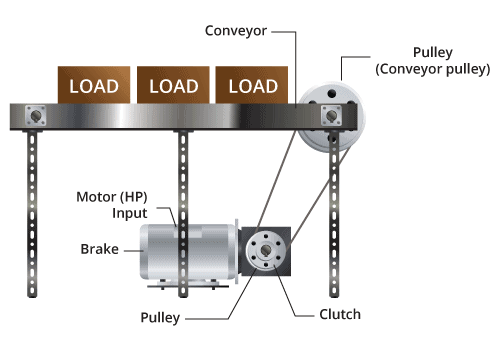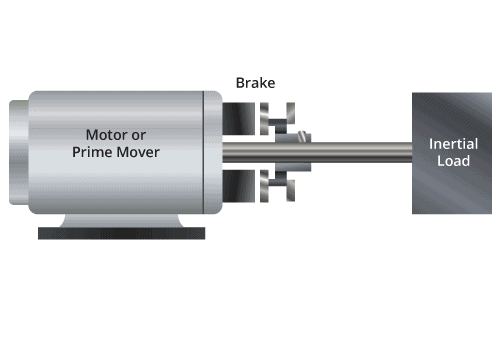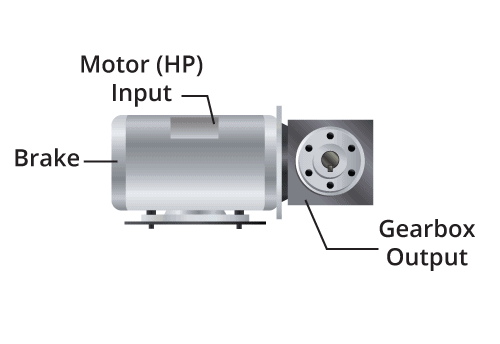TH = 63,024 x ((P x K)/ω)
Torque Calculators
Select Your Type of Torque
Calculating Torque for a Clutch or a Brake Application When the Horsepower is Known
When information about holding torque or load torque is unavailable, the horsepower of the motor can be used with a general formula to get a ballpark figure for Torque requirements. The value of “K” service factor is either 1.5 or 3 depending on the application. 1.5 is used when the application is “light duty” (Low cycle rate, dwell before starting and stopping) 3.0 when the application is “Heavy Duty” (High Cycle rate, continuous starting and stopping). Here are the variable definitions:
P = motor output power, HP
ω = motor speed, rpm
k= service factor
Formulas are to be considered reference only. Please consult SEPAC Engineering prior to final product selection.
TD = 0.1047(Iω)/t
Calculate Starting/Stopping Torque
To calculate the Torque required to start or stop an inertial load, the result is multiplied by a safety/service factor of 1.25. Consider the following variables:
I – Rotational load inertia, lb-in-sec2
ω – Differential slip speed, rpm
t – Time to speed, sec
Note: 0.1047 is a factor that converts rad/sec to rpm
Formulas are to be considered reference only. Please consult SEPAC Engineering prior to final product selection.
TH = (T/GR) x K
Calculating Torque vs. Speed
For use cases that have a motor, drive, and a gearbox, it’s important that the brake be located at the high-speed end—most commonly the motor end. Mounting the brake on the motor end allows a smaller brake to be used, but it’s still important to properly calculate the torque required to hold the load. The value of “K” service factor is either 1.5 or 3 depending on the application. 1.5 is used when the application is “light duty” (Low cycle rate, dwell before starting and stopping) 3.0 when the application is “Heavy Duty” (High Cycle rate, continuous starting and stopping).
Determining this torque requires working backwards from the load using the following variables:
TH – Required holding torque
GR – Gear ratio
K – Service factor
Formulas are to be considered reference only. Please consult SEPAC Engineering prior to final product selection.






